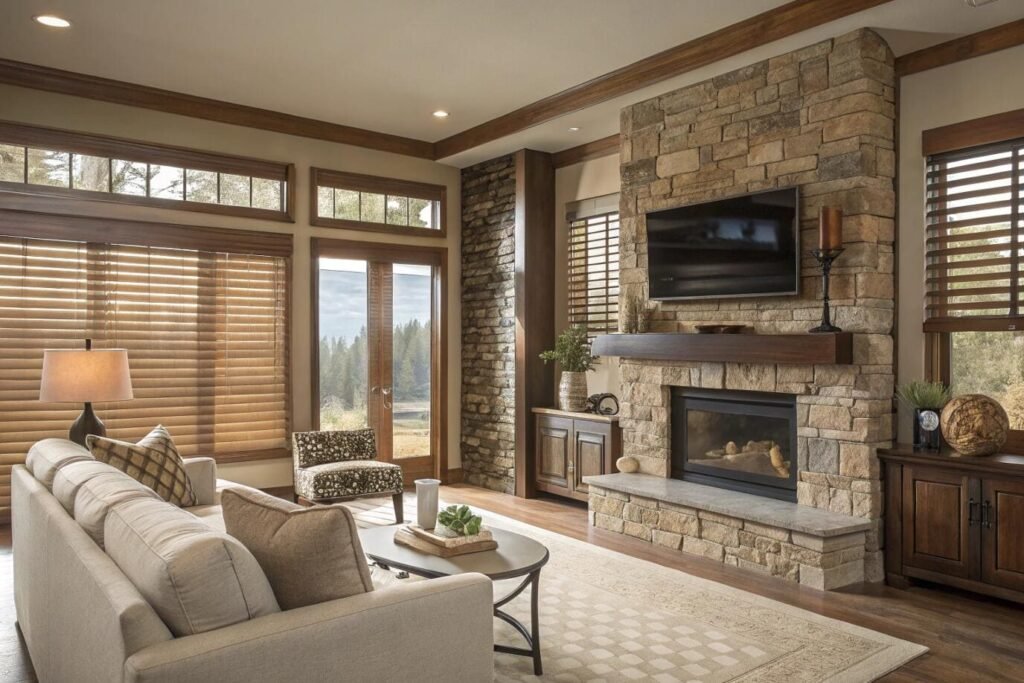Choosing the wrong window blinds can derail your entire project timeline and budget. You need clarity on styles, performance, and installation complexity before making procurement decisions.
Modern window blinds[^1] fall into two main categories: horizontal slat systems (venetian, wood, faux wood, aluminum) and vertical panel systems, each offering distinct light control mechanisms, privacy levels, and aesthetic outcomes for different project requirements.
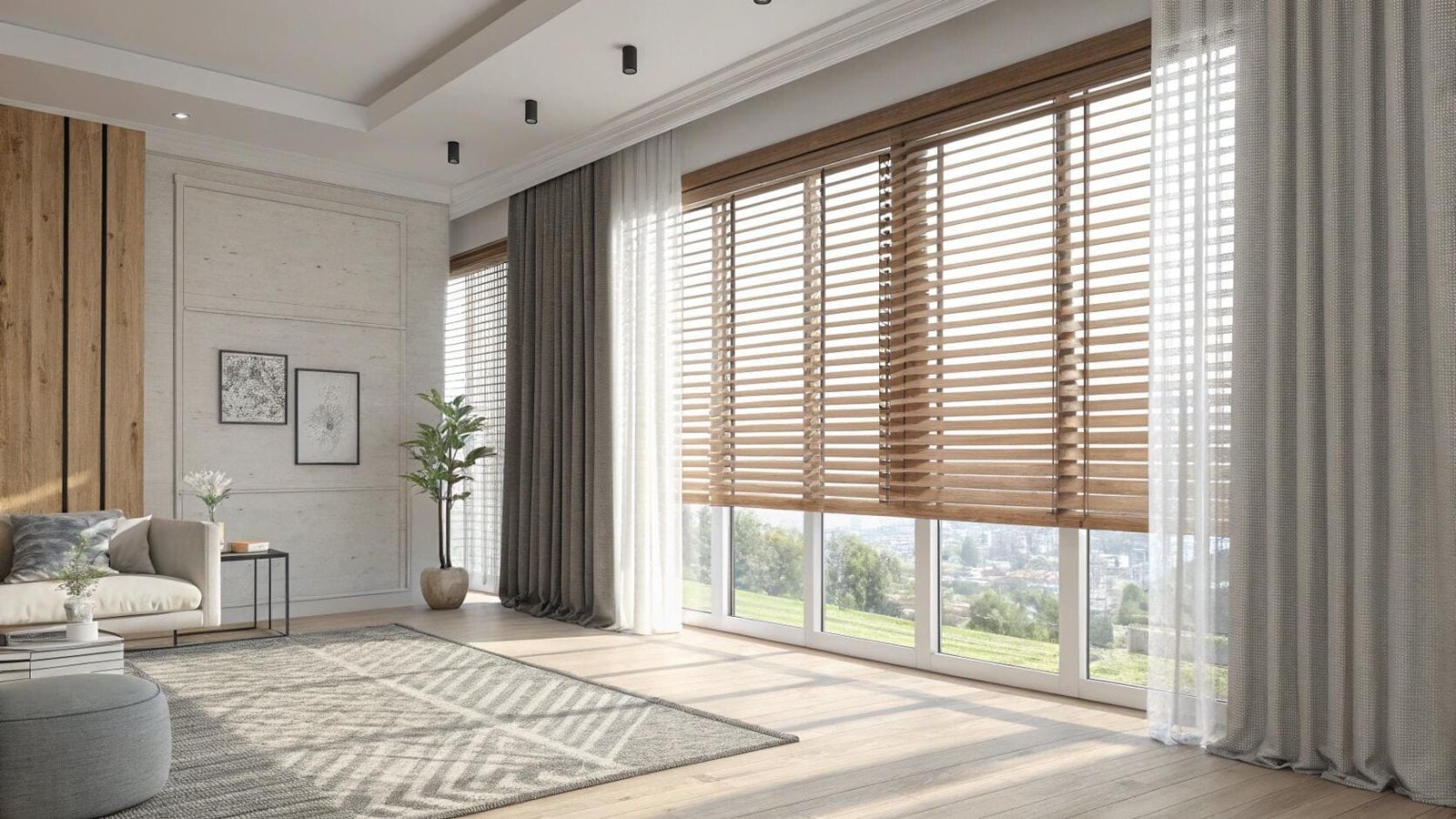
After 15 years in the window treatment industry, I've seen countless projects succeed or fail based on blind selection decisions. The complexity of today's market demands a systematic approach to specification and procurement.
What are the different styles of blinds for windows?
Project specifications require precise understanding of available blind styles. Wrong selections lead to costly change orders and delayed installations.
Window blinds divide into six primary categories: venetian (horizontal slats), vertical panels, wood slats, faux wood composites, aluminum mini-blinds, and specialty systems like top-down/bottom-up configurations, each serving specific functional and aesthetic project requirements.
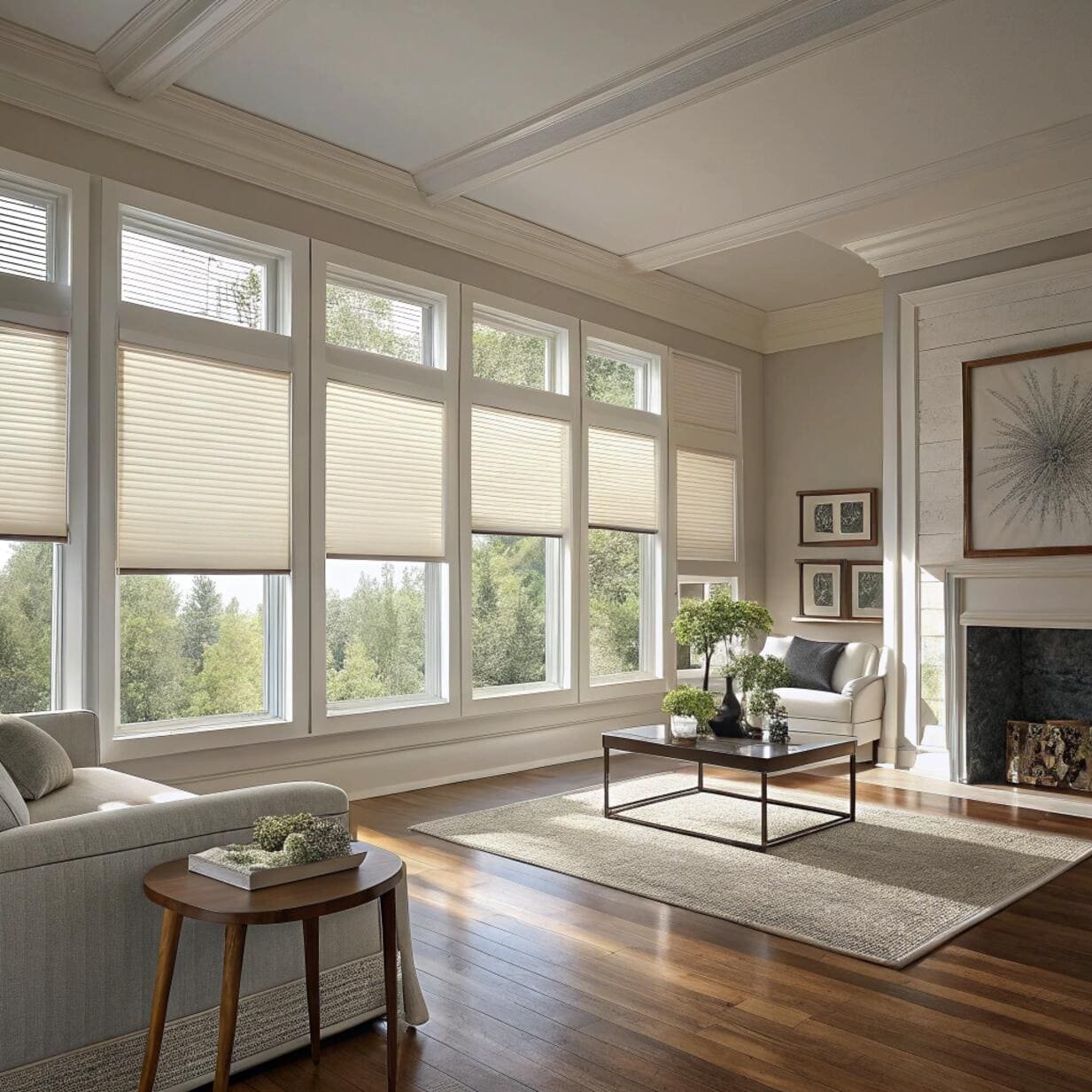
Understanding blind categorization requires breaking down construction methods, material specifications[^2], and operational mechanisms. Venetian blinds represent the most common horizontal slat system, featuring adjustable slats ranging from 1-inch mini-blinds to 2.5-inch premium wood options. These systems operate through cord-and-pulley mechanisms or modern cordless spring-loaded systems, with motorization available for large installations.
| Blind Style | Slat Width | Material Options | Best Applications | Price Range |
|---|---|---|---|---|
| Mini Blinds | 1" | Aluminum, PVC | Budget projects, rentals | $15-45/window |
| Standard Venetian | 2" | Wood, faux wood, aluminum | Residential, commercial | $45-150/window |
| Premium Wood | 2.5" | Real wood, bamboo | High-end residential | $80-300/window |
| Vertical Panels | 3.5" | Fabric, PVC, aluminum | Large windows, sliding doors | $60-200/window |
Vertical blind systems serve large window applications and sliding door installations. These systems feature individual vertical slats suspended from a head rail track, allowing both tilting for light control and full opening for access. Modern vertical systems include fabric options, PVC for moisture resistance, and aluminum for commercial applications.
Specialty configurations include top-down/bottom-up systems, allowing independent operation of upper and lower sections for precise privacy and light control. These systems cost 40-60% more than standard configurations but deliver superior functionality for bedrooms and bathrooms where privacy and natural light both matter.
What's the difference between blinds and shades?
Many project buyers confuse blinds and shades, leading to specification errors and unsuitable installations. This confusion creates budget overruns and performance disappointments.
Blinds feature individual horizontal or vertical slats that tilt for light control while maintaining partial window coverage, whereas shades consist of continuous fabric panels that roll, fold, or pleat completely open or closed without intermediate positioning options.

The operational distinction drives project suitability analysis. Blinds provide graduated light control through slat adjustment - you can achieve 10%, 50%, or 90% light reduction while maintaining some window coverage. This flexibility suits spaces requiring variable lighting throughout the day, such as offices, living rooms, and dining areas where glare control matters more than complete darkness.
Shades operate as binary systems - open or closed positions with limited intermediate options. Roller shades, cellular shades, and roman shades either fully expose the window or provide complete coverage. However, modern shade systems offer light-filtering fabrics that provide privacy while allowing diffused natural light penetration.
Material construction creates durability differences[^3]. Blind slats, whether wood, aluminum, or PVC, withstand impact damage better than shade fabrics. A bent slat can often be straightened or replaced individually, while shade fabric damage typically requires complete unit replacement. This factor influences long-term maintenance costs and lifecycle analysis.
Installation complexity varies significantly. Blind systems require precise bracket alignment and cord routing, especially for motorized installations. Shade systems typically mount with simple brackets and require minimal adjustment during installation. For projects with tight installation schedules, shades often reduce labor costs and installation time.
Cost analysis reveals different value propositions. Entry-level blinds start around $20-30 per window, while comparable shades begin at $40-60. However, premium blind systems can reach $200-400 per window, while high-end shades may cost $300-800 per window with motorization and specialty fabrics.
How to decide what type of blinds to get?
Decision-making without systematic evaluation criteria leads to poor specification choices. Project success depends on matching blind characteristics to specific performance requirements and budget constraints.
Blind selection requires analyzing five critical factors: light control requirements, privacy needs, maintenance expectations, aesthetic integration, and total cost of ownership including installation, operation, and replacement over a 10-15 year lifecycle.
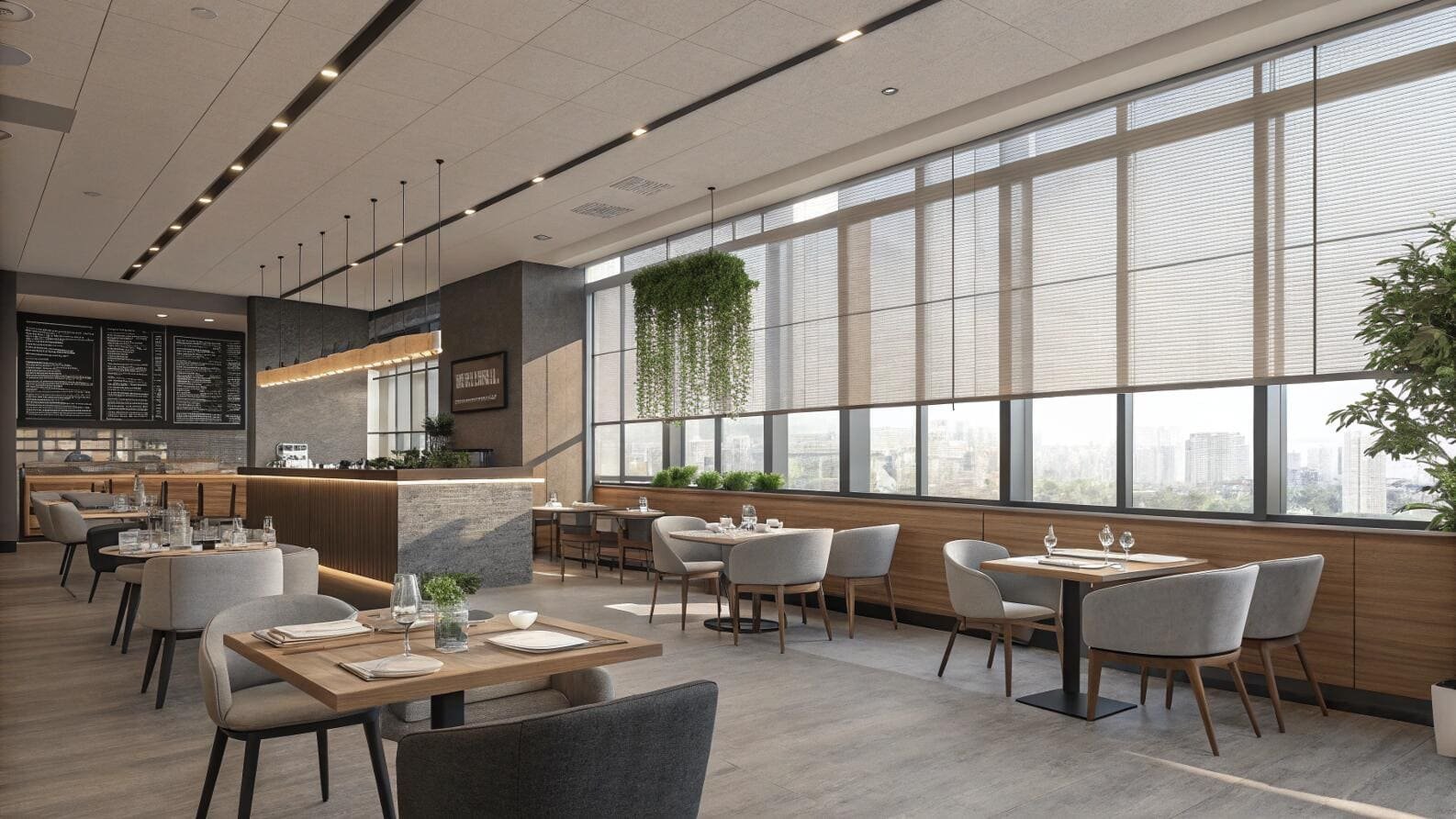
Light control analysis starts with understanding room function and orientation. South-facing windows require different solutions than north-facing windows. Offices need glare reduction without complete darkness, while bedrooms require blackout capabilities[^4]. Media rooms demand precise light elimination, while living spaces benefit from adjustable illumination throughout the day.
Privacy requirements vary by location and usage patterns. Ground-floor windows need different privacy solutions than upper-floor installations. Street-facing windows require consistent privacy, while backyard-facing windows might prioritize view preservation. Top-down/bottom-up configurations excel in situations requiring both privacy and natural light, such as bathroom windows or street-level bedrooms.
Maintenance expectations influence material selection significantly. High-traffic areas with children or pets require durable, easily cleaned surfaces. Wood blinds demand regular dusting and occasional refinishing, while aluminum and PVC options clean with simple wiping. Fabric components require professional cleaning or replacement, adding long-term costs.
| Decision Factor | Wood Blinds | Faux Wood | Aluminum | Vertical |
|---|---|---|---|---|
| Durability | High | Very High | Medium | Medium |
| Maintenance | High | Low | Low | Medium |
| Moisture Resistance | Low | High | High | Varies |
| Aesthetic Appeal | Premium | Good | Basic | Functional |
| Cost Range | $80-300 | $45-150 | $15-60 | $60-200 |
Budget analysis must include total cost of ownership[^5]. Initial purchase price represents only 40-60% of total costs over a 10-year period. Installation costs vary from $25-75 per window depending on complexity. Maintenance costs include cleaning supplies, repair parts, and potential replacement components. Energy efficiency impacts heating and cooling costs - quality blinds can reduce energy consumption by 15-25%.
Installation complexity affects project timelines and labor costs. Standard inside-mount installations take 20-30 minutes per window. Outside-mount installations require wall anchoring and may need professional installation. Motorized systems require electrical connections and programming, adding $100-200 per window in installation costs.
Which blinds are best for privacy vs light control?
Privacy and light control represent competing priorities in many installations. Poor understanding of these trade-offs leads to compromised functionality and client dissatisfaction.
For maximum privacy, choose blinds with wider slats (2" or larger), routeless construction, or cloth tape ladders that eliminate light gaps, while optimal light control requires narrow slats (1-1.5") with precise tilt mechanisms and blackout capabilities.
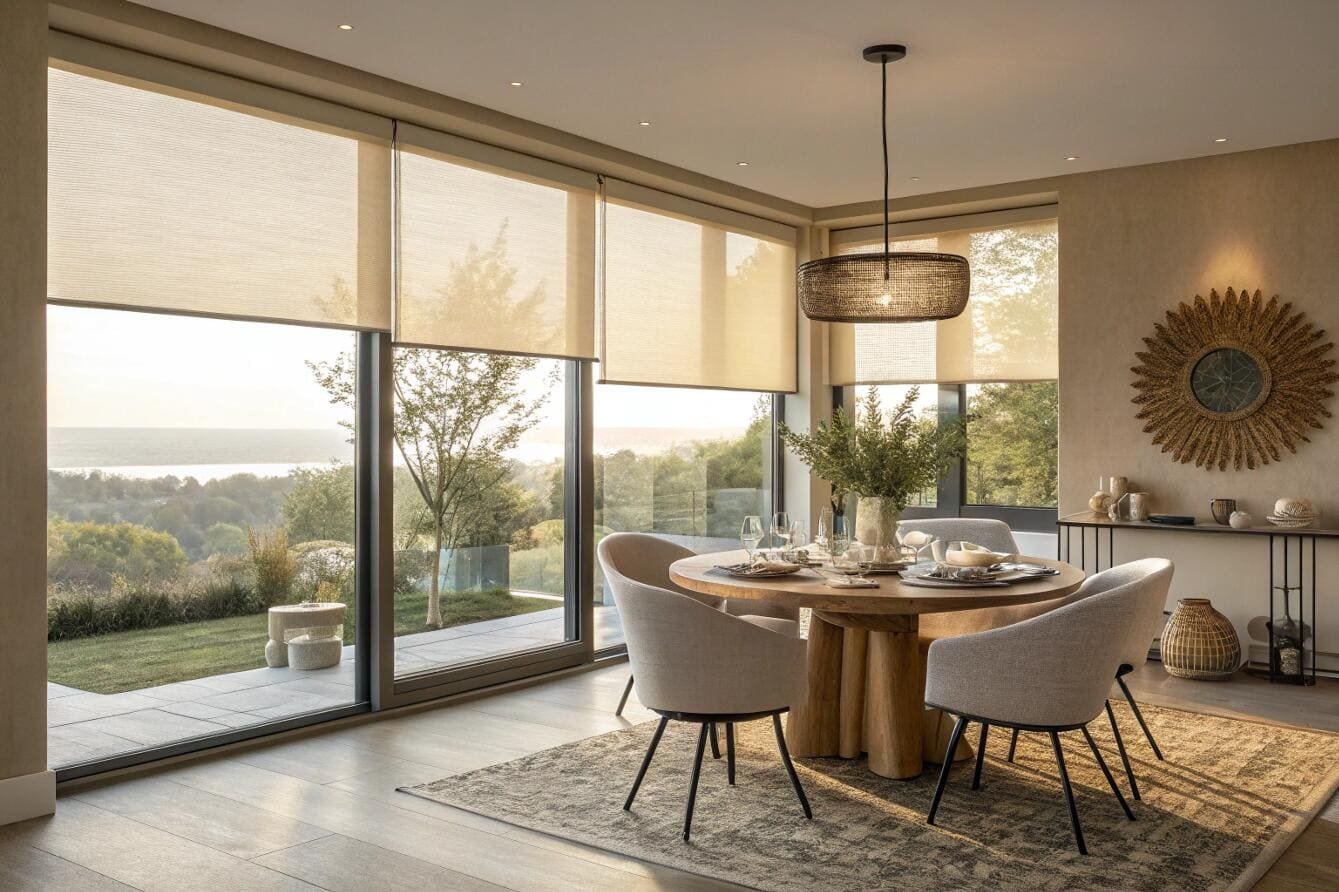
Privacy-focused installations require eliminating sight lines through the blind system. Standard venetian blinds[^6] create visual gaps when slats tilt, allowing partial views into the space. Routeless slat construction eliminates cord holes that create light and privacy leaks. Cloth tape ladder systems replace traditional cord routes with fabric strips, providing complete gap coverage while adding aesthetic appeal.
Light control optimization requires different engineering approaches. Narrow slats provide more precise light direction control - 1-inch slats offer 30-40% more adjustment positions than 2-inch slats. This granular control proves essential in spaces requiring specific lighting conditions throughout the day, such as computer workstations or art studios where glare management matters critically.
Blackout requirements demand specialized solutions. Standard blinds achieve 85-90% light reduction when properly installed and adjusted. Complete blackout requires room-darkening features such as side channels that prevent light leakage around blind edges, or integration with blackout curtains for 99% light elimination.
Top-down/bottom-up configurations solve the privacy-versus-light dilemma by allowing independent control of upper and lower blind sections. You can lower the top section to block sight lines while raising the bottom section to admit natural light. This configuration costs 40-60% more than standard systems but delivers superior functionality for challenging applications.
Material selection impacts both privacy and light control performance. Wood slats provide excellent privacy due to material density but may warp over time, creating gaps. Aluminum slats maintain consistent positioning but reflect light, potentially creating glare issues. PVC composite materials offer consistent performance and moisture resistance while maintaining privacy benefits.
What kind of blinds are timeless?
Trend-driven selections become dated quickly, creating replacement pressure and aesthetic conflicts. Timeless designs maintain appeal across decades while providing consistent performance.
Classic 2-inch wood blinds in neutral colors (white, off-white, natural wood tones) represent the most timeless choice, offering enduring aesthetic appeal, broad design compatibility, and consistent market acceptance across residential and commercial applications.
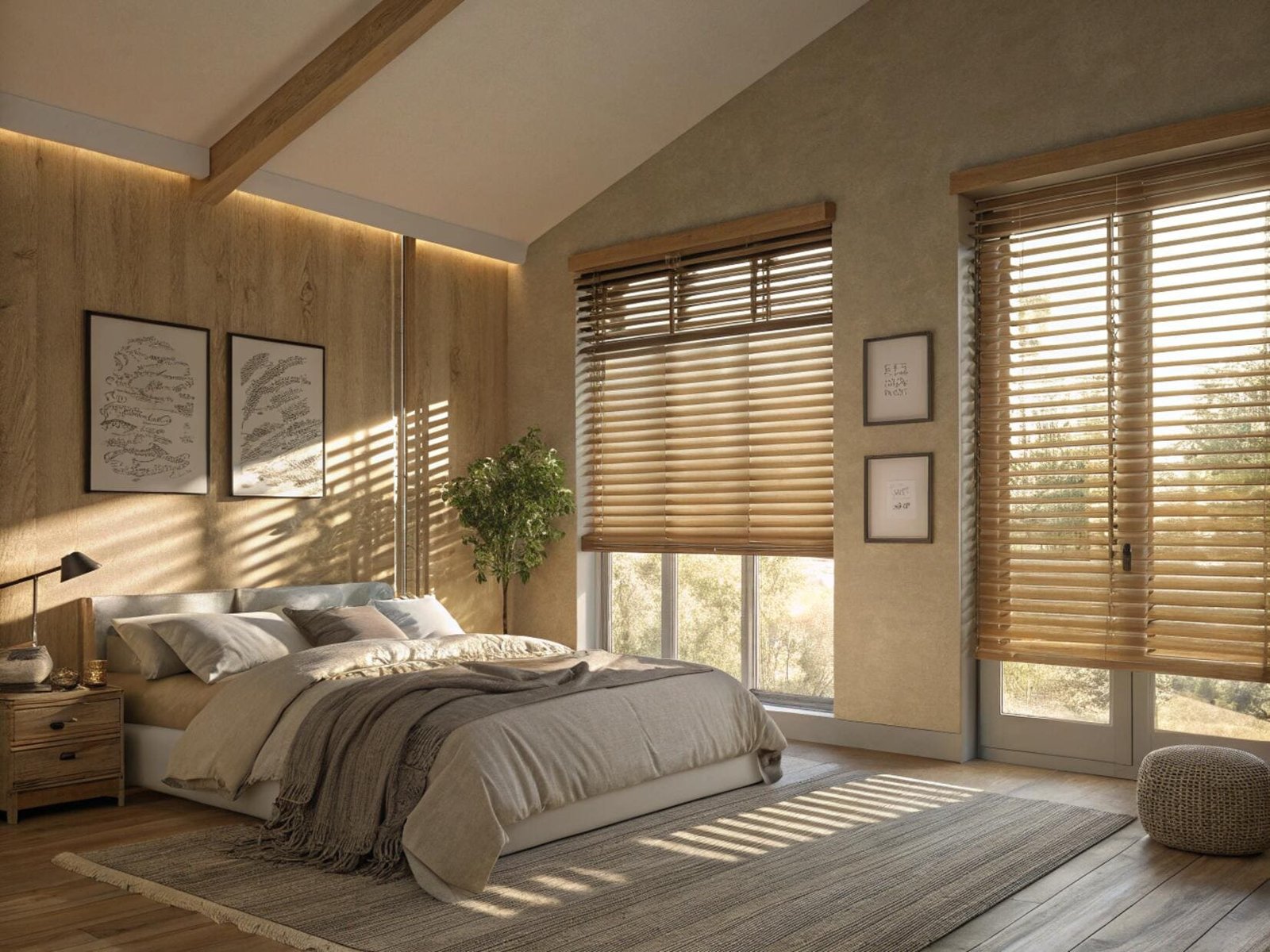
Timeless design principles emphasize proportion, material quality, and color neutrality over trendy features or bold statements. Two-inch slat width provides optimal balance between light control functionality and visual weight. Wider slats can appear overwhelming in smaller windows, while narrower slats may seem insufficient for larger openings.
Material authenticity contributes to timeless appeal. Real wood blinds develop character over time through natural aging and patina development. Quality wood species like basswood or oak maintain structural integrity for decades while acquiring subtle color variations that enhance rather than detract from their appearance. Synthetic materials, while practical, lack this organic evolution.
Color selection determines long-term viability. Neutral palettes - whites, creams, natural wood tones, and soft grays - integrate seamlessly with changing interior design trends. Bold colors or heavily patterned options may complement current décor but risk appearing dated as design preferences evolve. Market research indicates that 75% of buyers prefer neutral window treatments that won't require replacement during interior updates.
Construction quality separates timeless installations from temporary solutions. Premium hardware, including robust tilt mechanisms, reinforced ladder systems, and corrosion-resistant components, ensures decades of smooth operation. Quality installations maintain consistent appearance and functionality, while budget options may develop operational issues or aesthetic problems within 3-5 years.
Market acceptance across diverse applications strengthens timeless appeal. Classic wood blinds suit traditional architecture, contemporary spaces, commercial installations, and rental properties equally well. This versatility provides design flexibility and broad market appeal, important factors for both residential and commercial projects.
What blinds work best for different room types?
Room-specific performance requirements demand tailored solutions. Generic approaches compromise functionality and create maintenance issues or aesthetic conflicts.
Kitchen and bathroom installations require moisture-resistant materials like PVC or aluminum, bedrooms benefit from blackout-capable wood or faux wood systems, while living areas perform best with premium wood blinds offering superior light control and aesthetic appeal.

Kitchen environments present unique challenges requiring specialized solutions. Cooking generates moisture, grease particles, and temperature fluctuations that damage wood blinds and fabric components. PVC faux wood blinds resist moisture absorption and clean easily with standard kitchen cleaners. Aluminum mini-blinds provide budget-friendly moisture resistance but may appear too utilitarian for design-conscious installations.
Grease accumulation affects blind performance and appearance. Smooth, non-porous surfaces like PVC composite materials resist grease adherence and clean completely with degreasing agents. Textured surfaces or fabric components trap grease particles, creating permanent staining and odor retention. Kitchen blind selection should prioritize easy cleaning over aesthetic complexity.
Bathroom installations require maximum moisture resistance and privacy capabilities. Humidity levels regularly exceed 70-80%, creating condensation that warps wood blinds and promotes mold growth in fabric components. PVC vertical blinds excel in shower areas where complete moisture exposure occurs. Faux wood horizontal blinds provide better aesthetics for general bathroom areas while maintaining moisture resistance.
Bedroom applications prioritize blackout capabilities and quiet operation. Wood blinds provide excellent light blocking when properly sized and installed, while cordless operation eliminates noise from chain movement. Top-down/bottom-up configurations allow privacy while admitting morning light, particularly valuable in master bedroom applications.
| Room Type | Primary Requirements | Recommended Materials | Special Features |
|---|---|---|---|
| Kitchen | Moisture, grease resistance | PVC, aluminum | Easy cleaning, smooth surfaces |
| Bathroom | Maximum moisture resistance | PVC vertical, faux wood | Privacy, mold resistance |
| Bedroom | Light control, quiet operation | Wood, faux wood | Blackout, cordless operation |
| Living Room | Aesthetics, light control | Premium wood, cloth tapes | Style, precise light control |
| Office | Glare control, durability | Aluminum, commercial wood | Anti-glare, high-cycle operation |
Living room installations balance aesthetics with functionality. These spaces receive the most visual attention and require window treatments that enhance rather than detract from overall design schemes. Premium wood blinds with cloth tape ladder systems provide superior aesthetics while eliminating the utilitarian appearance of standard cord systems.
Office environments demand glare control and durability for high-use applications. Computer screens require precise light control to prevent glare issues, while frequent adjustment necessitates robust tilt mechanisms. Commercial-grade components ensure consistent performance under heavy use conditions.
Conclusion
Successful blind selection requires systematic analysis of room requirements, material properties, and long-term performance expectations rather than aesthetic preferences alone.
Extended FAQ Section
What's the difference between 1 inch and 2 inch blinds?
The slat width difference between 1-inch and 2-inch blinds creates significant performance and aesthetic variations that affect project outcomes. One-inch blinds, commonly called mini-blinds, provide more precise light control with approximately 40% more tilt positions than 2-inch systems. This granular control proves essential for computer workstations, art studios, or any application requiring specific lighting conditions throughout the day. However, the narrower slats create a busier visual appearance that may overwhelm smaller windows or delicate interior designs. Two-inch blinds offer superior aesthetic proportion for most residential applications while providing adequate light control for general use. The wider slats create fewer visual lines, producing a cleaner, more sophisticated appearance that complements both traditional and contemporary interiors. Installation complexity remains similar, but 2-inch systems typically cost 20-30% more due to increased material requirements. Durability analysis shows 2-inch slats resist bending and damage better than 1-inch alternatives, particularly important in high-traffic areas or homes with children and pets.
How do I measure windows for custom blinds?
Accurate measurement determines blind fit, operation, and aesthetic success - errors create gaps, operational problems, and professional installation delays. Start by determining inside-mount versus outside-mount installation based on window frame depth and aesthetic preferences. Inside-mount requires minimum 2-inch frame depth for proper bracket installation and blind operation. Measure window width at three points - top, middle, and bottom - using the narrowest measurement to ensure proper fit. Height measurement requires three points as well - left side, center, and right side - using the longest measurement for complete coverage. Record measurements to the nearest 1/8-inch for precision fitting. Outside-mount installations require adding 2-4 inches to width and height measurements for proper light blocking and aesthetic proportion. Consider obstacles like window cranks, handles, or protruding trim that might interfere with blind operation. Professional measurement services cost $25-50 per window but eliminate costly remeasurement and reordering scenarios. Always verify measurements twice before placing orders, as custom blinds typically cannot be returned or exchanged for measurement errors.
Can I install window blinds myself or need professional help?
Installation complexity varies significantly based on blind type, window configuration, and mounting requirements - DIY installation works for standard applications while complex projects require professional expertise. Basic inside-mount venetian blinds with standard brackets typically install in 20-30 minutes per window using basic tools like drill, level, and measuring tape. These installations
---
[^1]: Explore this link to discover various window blind options that suit your home decor and functional needs.
[^2]: Understanding material specifications can help you choose durable and suitable blinds for your needs.
[^3]: Understanding durability can help you make informed decisions about your window treatments.
[^4]: Learn about blackout blinds and how they can improve sleep quality and energy efficiency.
[^5]: Learn how to calculate the total cost of owning blinds over their lifespan, including maintenance.
[^6]: Learn about venetian blinds, their features, and why they are a popular choice for many homeowners.Partner with VelaBlinds for Your Next Project
Smart window treatments shouldn't be complicated. After working with 500+ distributors and contractors worldwide, I've streamlined the process to get you quality products, competitive pricing, and reliable support - every time.
Why project professionals choose VelaBlinds:
- ✅ Fast, Accurate Quotes - Detailed specs and pricing within 24 hours
- ✅ Transparent Pricing - No hidden fees, volume discounts clearly outlined
- ✅ Quality Assurance - Direct partnerships with certified OEM manufacturers
- ✅ Project Support - Dedicated account manager from quote to delivery
Start your next project:
📧 Quick Quote: Send your requirements to info@velablinds.com
📱 Direct Contact: WhatsApp +86 137 2012 8317
🌐 Browse Solutions: https://velablinds.com/
📁 Product Resources: Access spec sheets, catalogs & project files
Jimmy Chen, Founder
"I built VelaBlinds to solve the real challenges I faced as a project buyer - long lead times, unclear specs, and unreliable suppliers. Let's discuss how we can power your projects with smarter blinds."
Serving distributors and contractors across North America, Europe, and Australia since 2018.

